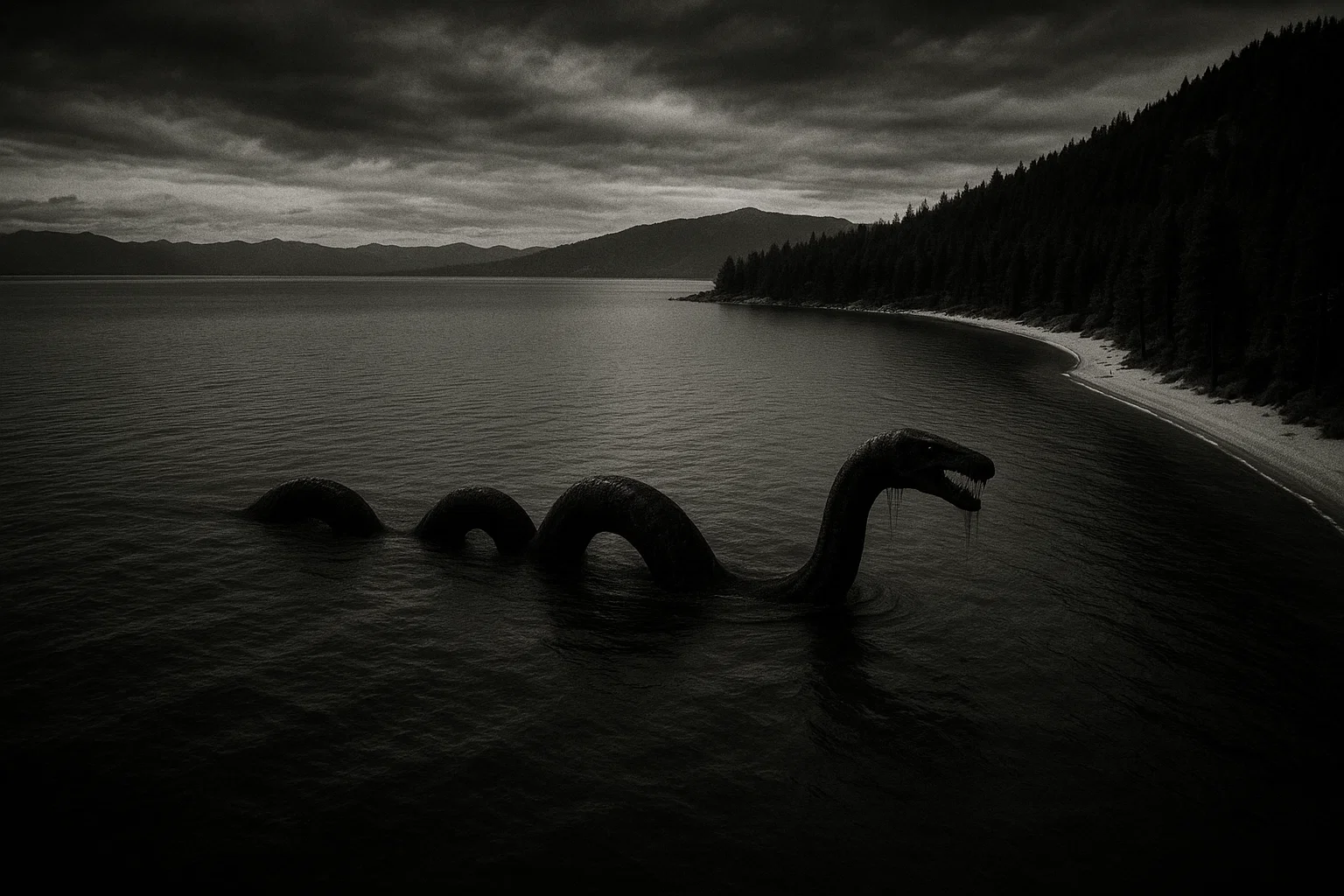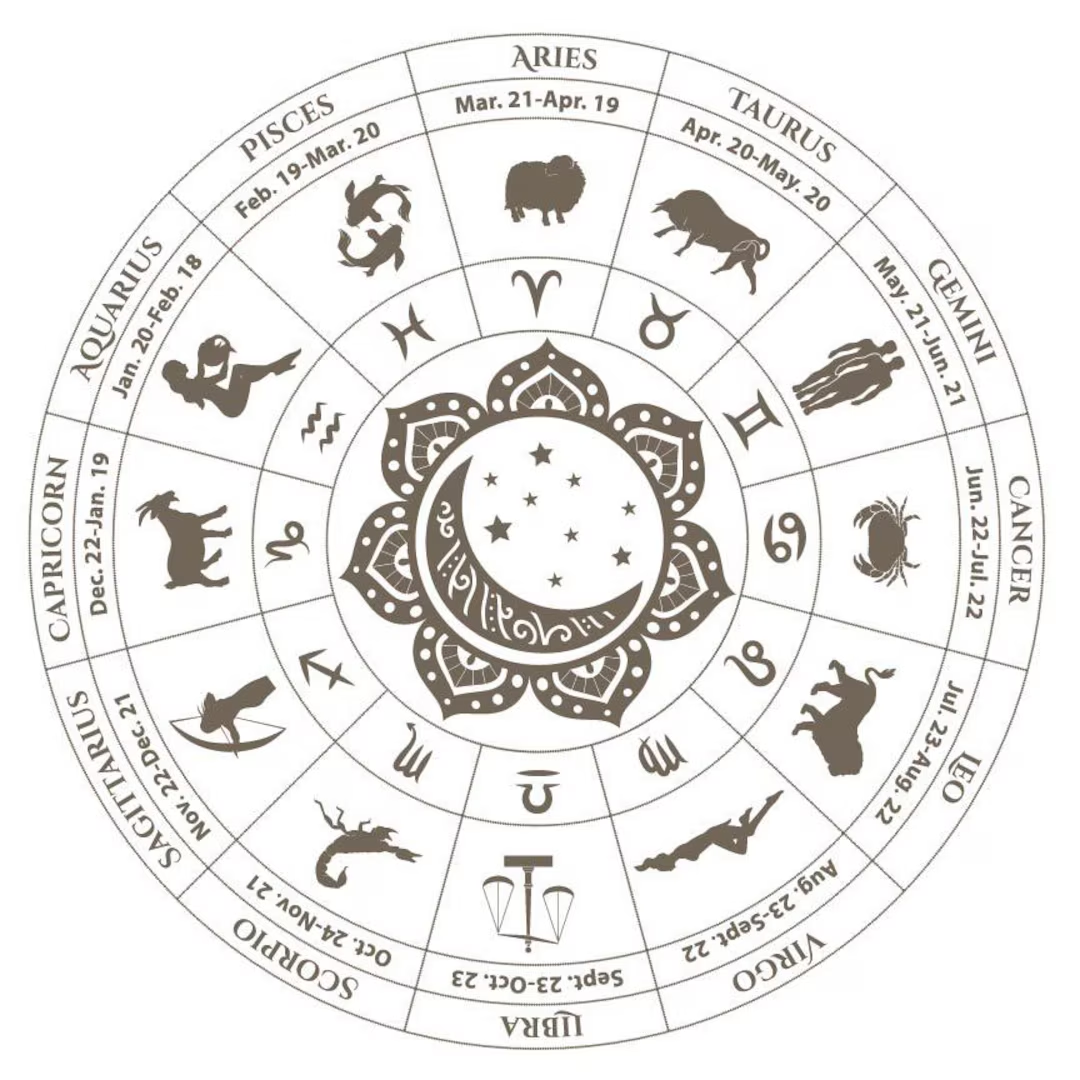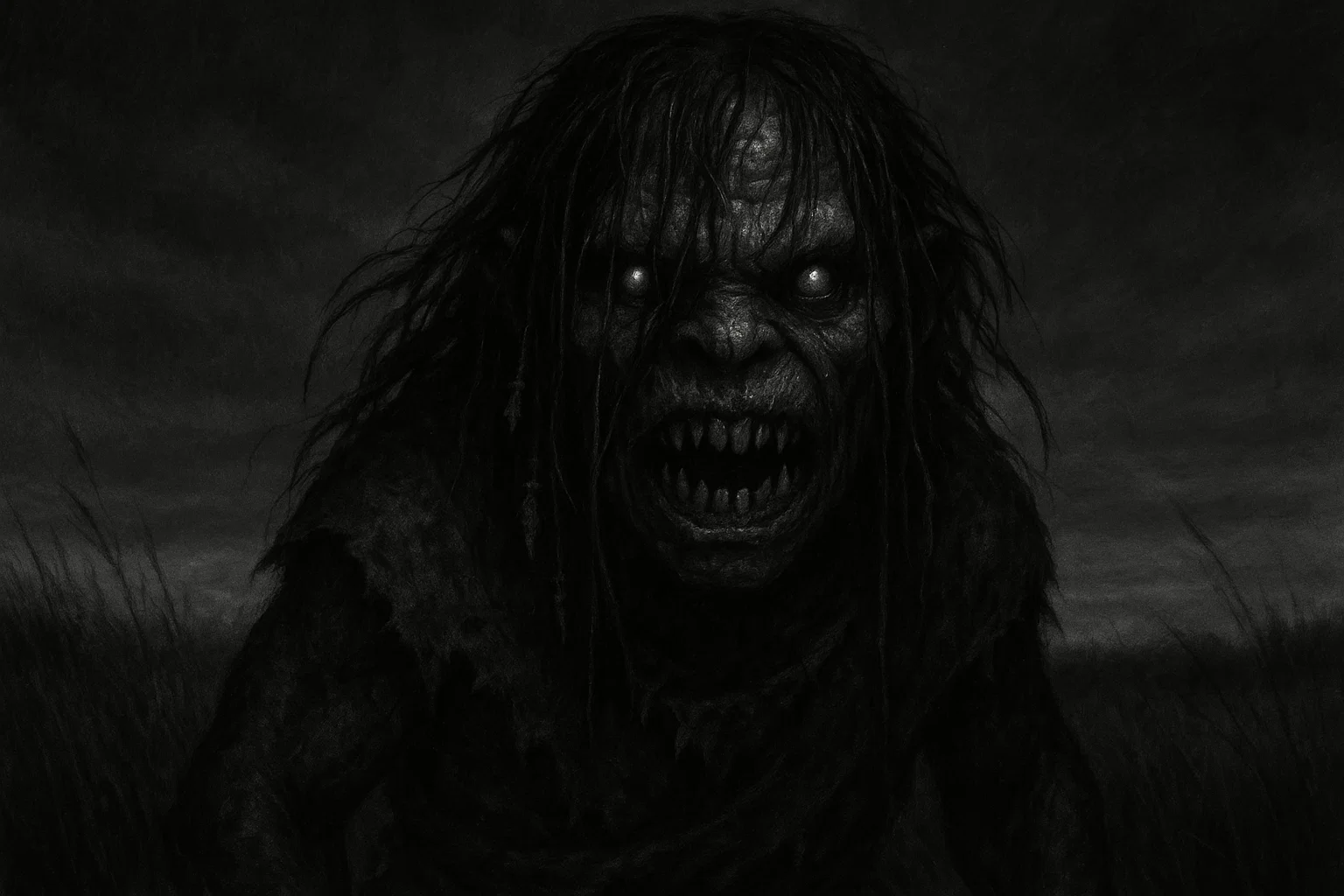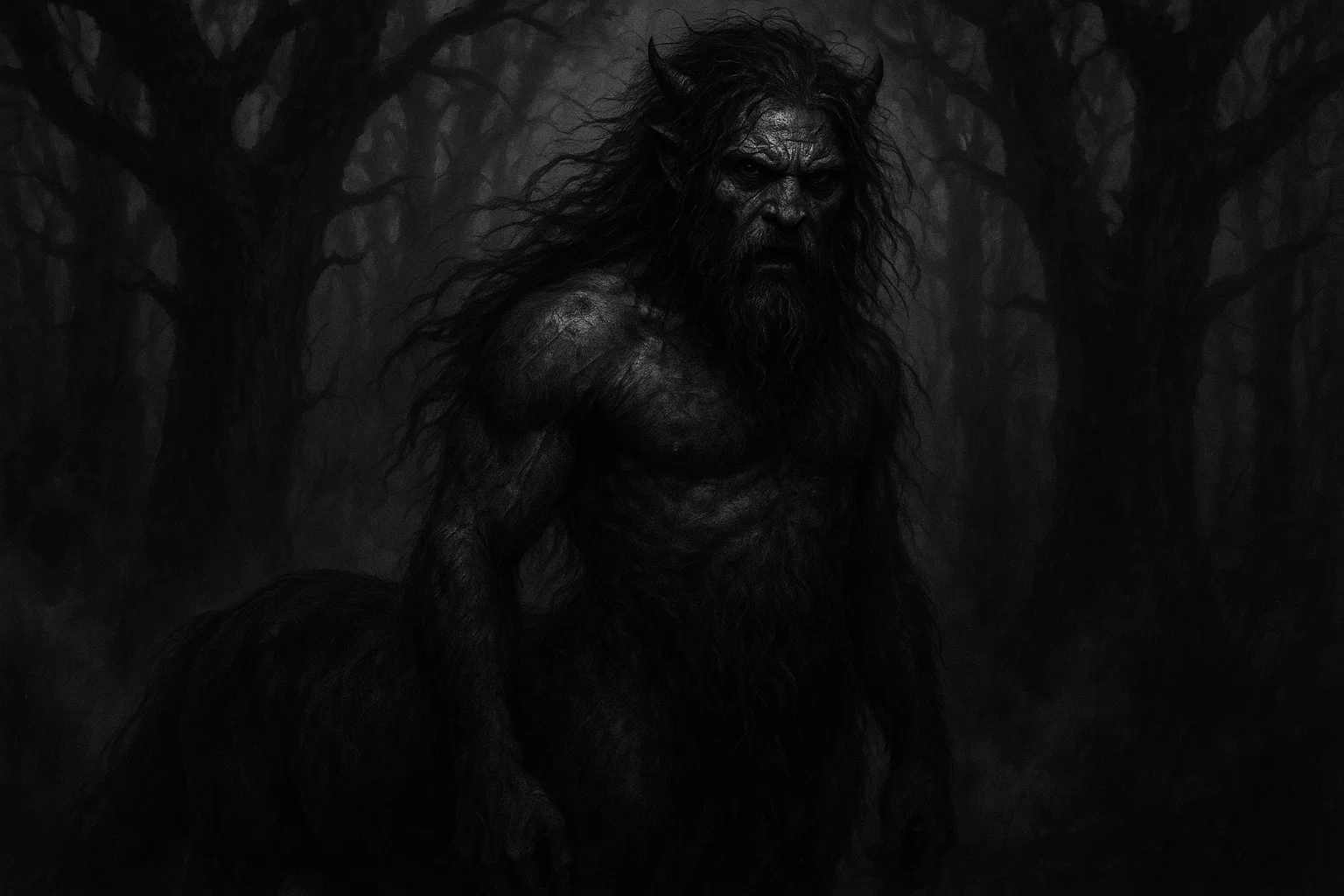Tahoe Tessie is a cryptid reported to inhabit Lake Tahoe, a large freshwater lake on the California-Nevada border. Descriptions of the creature date to the mid-19th century, with accounts from local tribes and early settlers.
The legend has persisted through eyewitness reports, media coverage, and cultural depictions. Tahoe Tessie is often compared to other lake monsters due to its snake-like form and elusive nature.
Reports typically describe a large aquatic entity that surfaces briefly, creating wakes or humps in the water. The creature’s presence is tied to the lake’s extreme depth, which reaches over 1,600 feet.
Summary
Overview
| Attribute | Details |
|---|---|
| Name | Tahoe Tessie |
| Aliases | Tahoe Monster, Lake Tahoe Leviathan |
| Threat Level | Benign; no reports of attacks on humans |
| Habitat | Lake Tahoe, California-Nevada border; depths exceeding 1,600 feet, alpine freshwater environment above 6,200 feet altitude |
| Physical Traits | Serpentine body, 10–80 feet long; humped back, smooth dark skin, possible small head and fins; variations include whale-like or sturgeon-shaped forms |
| Reported Sightings | Cave Rock, Zephyr Cove, Tahoe City, Sunnyside Beach, South Shore near Emerald Bay, Tahoe Park Beach |
| First Documented Sighting | 1865, by I.C. Coggin near Lake Tahoe |
| Species Classification | Unknown; speculated reptile or large fish |
| Type | Aquatic |
| Behavior & Traits | Elusive, surfaces in calm waters; creates V-shaped wakes; active in summer, particularly June in even-numbered years; no aggressive encounters reported |
| Evidence | Eyewitness accounts, blurry photographs, sonar anomalies, unverified video footage |
| Possible Explanations | Misidentified sturgeon, optical illusions from water refraction, floating logs or debris, wind-induced waves |
| Status | Ongoing mystery; sightings sporadic but reported into the 2020s |
Who or What Is Tahoe Tessie?
Tahoe Tessie is a cryptid associated with Lake Tahoe, described as a large, serpent-like creature that inhabits the lake’s depths. The legend originates from oral traditions of the Washoe and Paiute tribes, who referred to powerful water spirits known as Water Babies residing in the lake, particularly near Cave Rock.
These entities were viewed as guardians capable of influencing human affairs, sometimes through harm if disrespected. Early European settlers in the mid-19th century adapted these stories, reporting sightings of a physical monster rather than a spirit.
By the 20th century, Tahoe Tessie had become a more distinct figure in local accounts. The name “Tessie” appeared in the 1980s, coined by resident Bob McCormick as a nod to Scotland’s Loch Ness Monster.
McCormick’s children’s book series portrayed Tessie as a friendly dragon-like being, shifting the creature from a fearsome entity to a cultural mascot. This version appears on merchandise, in festivals, and as a symbol for environmental campaigns like “Don’t Mess with Tessie,” which promotes lake cleanliness.
The creature is said to live in underwater tunnels beneath Cave Rock, emerging sporadically to traverse the lake. Sightings often occur during calm conditions, with witnesses noting large wakes or humped silhouettes.
Despite the lack of verifiable proof, Tahoe Tessie embodies the lake’s isolation and depth, fueling speculation about undiscovered aquatic life. Tribal lore emphasizes respect for the water, while modern reports treat the cryptid as a benign anomaly.
Over 150 years, the legend has blended indigenous beliefs with settler folklore, maintaining its place in Tahoe’s identity without resolving into fact or fiction.
Your Personalized, Hyper Accurate Moon & Astrology Reading
Limited time offer: Get your FREE, fully personalized Moon & Astrology Reading that takes astrology to a whole new level. Discover the secret depths of your personality, relationships, and true purpose in life.
What Does Tahoe Tessie Look Like?
Eyewitness accounts of Tahoe Tessie vary in detail but consistently describe a large, elongated aquatic form. The creature is most often reported as snake-like, with a body length estimated at 10-80 feet.
Early descriptions from the 1860s portray it as a massive serpent, broad as a barrel and dark in color, possibly black or deep green to blend with the lake’s depths. The skin is said to be smooth and scaleless, lacking the rough texture of typical reptilian skin. However, some reports describe a leathery or rubbery appearance.
A common feature is the humped back, with witnesses counting three to five humps protruding above the water, resembling a series of arched segments. These humps create a distinctive silhouette when the creature surfaces, often accompanied by a V-shaped wake indicating rapid movement.
The head, when visible, is described as small and elongated, sometimes compared to a snake’s or a horse’s, with no prominent horns or mane.
Eyes are rarely noted, but in one 2006 account, a family reported an upturned white nose resembling a sturgeon’s, suggesting a snout-like projection. Fins or flippers are mentioned sporadically, small and paddle-shaped, supporting a reptilian or piscine build.
Variations exist across reports. Some 1950s sightings depict a whale-like form, rounded and bulky. In comparison, others from the 1980s describe a more slender, eel-like body without visible limbs.
Color shifts from jet black in deep water to turquoise near the surface, possibly due to light refraction. Movement is undulating, vertical like a mammal rather than lateral like a fish, with speeds exceeding 60 mph in one police officer’s account. No reports include claws, teeth, or bioluminescence, reinforcing a non-predatory profile.
These inconsistencies may stem from viewing distance, water clarity, or psychological factors. For instance, a 1984 sighting by two women near the South Shore noted a “long black shape” with undulating motion, while a 2005 fisherman observed a dark object cutting through calm waters without fully breaking the surface.
Blurry photos from the 2000s show indistinct humps, often debunked as waves or logs, but they align with the core snake-like motif.
You May Also Like: Siren: The Haunting Monster That Lured Sailors to Death
Habitat
Lake Tahoe serves as the primary habitat for Tahoe Tessie, a vast alpine lake spanning 22 miles long and 12 miles wide at an elevation of 6,225 feet in the Sierra Nevada mountains. Straddling the California-Nevada border, the lake covers 191 square miles.
It supports a variety of human activities, including boating, fishing, and skiing on the surrounding slopes. Its waters remain cold year-round, averaging 41°F at the bottom, due to minimal mixing from thermal stratification, which creates distinct layers: a warm epilimnion in summer and a cold hypolimnion below.
The lake’s extreme depth of 1,645 feet makes it the second-deepest in the United States and the tenth-deepest globally. This profundity, combined with clarity up to 70 feet of visibility in surface waters, transitions to inky blackness below, providing ideal concealment for large aquatic forms.
Tahoe’s volume exceeds 39 trillion gallons, fed by 63 streams and springs, with outflow primarily through the Truckee River toward Pyramid Lake. Geological formation occurred about 2 million years ago during the Pleistocene, carving a basin from volcanic and glacial activity, resulting in steep granite walls and submerged moraines.
Specific locales tied to Tessie include Cave Rock on the east shore, a limestone outcrop sacred to the Washoe tribe, believed to overlie underwater tunnels linking to Pyramid Lake.
Legends claim these passages allow migration, though hydrological studies confirm surface connections via the Truckee, but no verified subsurface channels.
Other hotspots are Zephyr Cove and Emerald Bay on the south shore, where sightings cluster due to calm bays and tourist traffic, and Tahoe City on the north, near deeper drop-offs. Sunnyside Beach and Tahoe Park Beach on the west shore report humped sightings in shallower areas, possibly indicating foraging zones.
Vegetation is sparse subaqueously, limited to algae and aquatic plants such as Potamogeton in the shallows, supporting a food web of zooplankton, mysis shrimp, and introduced fish such as lake trout and kokanee salmon.
Fauna includes bald eagles, ospreys, and bears along the shores, but the lake’s oligotrophic status—low nutrient levels—lowers biomass, challenging the sustenance of large predators. Human settlements encircle the basin: Stateline and South Lake Tahoe bustle with casinos and resorts, while north shore communities like Incline Village offer quieter enclaves. Winter snowpack exceeds 10 feet, freezing edges but rarely the full surface, maintaining liquid depths.
This environment’s isolation, with oxygen levels dropping below 600 feet, fosters speculation about relict populations. Tribal lore views the lake as a spiritual nexus, with Water Babies inhabiting crevices near Cave Rock.
Tahoe Tessie Sightings
| Date | Place | Witness Details | Description | Reliability |
|---|---|---|---|---|
| 1865 | Lake Tahoe shore | I.C. Coggin, San Francisco socialite | Massive serpent-like creature surfacing | Medium: Single witness, early anecdotal report |
| Late 1800s | Lake Tahoe | Group of lumberjacks | Large creature in the lake | Low: Group sighting, vague historical account |
| 1950s | South Shore | Two off-duty Reno police officers | Large black hump rising, matching boat speed over 60 mph | High: Law enforcement witnesses, consistent motion details |
| 1970s | Lake Tahoe | Unnamed water-skier | 10-foot-long creature swimming beneath | Medium: Single witness, era-specific report |
| June 1982 | Lake Tahoe waters | Officers Kris Beebe and Jerry Jones, water-skiing | Unusually large creature swimming nearby | High: Multiple trained observers, daytime sighting |
| 1980s | Tahoe City | Optician, two nuns, 10 post office employees | Dark object with humps in calm water | High: Multiple independent groups, credible professions |
| 1980s | Zephyr Cove | Mike Conway, local TV station owner, commercial shoot crew | Brown humps plodding through water, lake rocking | Medium: Group sighting, unverified footage destroyed |
| 1980s | South Shore | Mickey Daniels, longtime fisherman and ex-sheriff’s officer | V-shaped wave cutting calm waters, unnatural speed | High: Experienced observer, no boat or fish explanation |
| June 1984 | South Shore | Two unnamed women | Long black shape undulating through water | Medium: Eyewitness pair, newspaper coverage but no photo |
| January 2004 | Palisades Tahoe (Squaw Valley) | Scientists at UC Davis conference | Multiple USO sightings discussed, no specific new observation | Medium: Professional group, retrospective accounts |
| April 2005 | Tahoe Park Beach, Sunnyside | Sacramento couple vacationing (Ron Talmage and Beth Douglas) | Solid shape with five humps along back | Medium: Couple, clear conditions, newspaper report |
| 2005 | South Shore | Mickey Daniels, longtime fisherman and ex-sheriff’s officer | V-shaped wave cutting calm waters, unnatural speed | High: Experienced observer, no boat or fish explanation |
| 2006 | Dark shore near Tahoe | Vacationing family | Large black scaleless creature like sturgeon, upturned white nose, mammalian undulation | Medium: Family group, detailed but no photo |
| April 2006 | Sunnyside off Commons | Symposium participants and off-duty bartender | Head and neck emerging briefly at sunset | Low: Distant group view, single photo of alleged head |
| November 2008 | Highway 50 near Cave Rock | Unnamed traveler | Humped form in water during drive-by | Low: Single observer, motion-blurred sighting |
| 1990s | Incline Village near Cave Rock | Local resident (husband of commenter) | Large tail with stegosaurus-like spikes in storm | Low: Single anecdotal report, stormy conditions |
| June 2022 | Edgewood Golf Club, South Lake Tahoe | H. Bosch and aunt | Four dark blue humps in glass-calm water, 300m offshore | Medium: Two witnesses, ideal conditions but wave alternative |
| July 2024 | Lake Tahoe (jet ski location unspecified) | Unnamed jet skier | Large hump 8-10 feet long protruding, causing waves | Low: Single witness, recent unverified report |
You May Also Like: 10 Scary Campfire Stories That’ll Keep Everyone Awake All Night
I.C. Coggin (Lake Tahoe Shore, 1865)
The earliest documented encounter with Tahoe Tessie occurred in 1865, when I.C. Coggin, a prominent San Francisco socialite, visited the Lake Tahoe region.
While boating near the shore, Coggin reported observing a massive serpent-like entity emerging from the depths. He described it as elongated and dark, with a barrel-thick body, gliding silently before submerging.
This account, published in local newspapers, marked the transition from tribal spirit lore to settler monster reports. Coggin’s status lent initial credibility, though no corroborators were noted. The sighting aligned with Washoe warnings about water entities, suggesting cultural influence.
Historians note poor record-keeping in the area before the 1870s. Still, Coggin’s diary entries corroborate the event, fueling early speculation about a physical creature in the newly explored lake.
Awaken XT is unlike anything you’ve ever tried before…
…it’s based off a closely guarded formula that’s said to be able to supercharge your pineal gland and help you access your untapped inner power. With it’s unique blend of extremely hard to source ingredients, Awaken XT helps support the healthy functioning of your pineal gland, as well as your other organs in your body.
Officers Kris Beebe and Jerry Jones (Lake Tahoe Waters, June 1982)
In June 1982, off-duty Reno police officers Kris Beebe and Jerry Jones experienced a close encounter while water skiing on Lake Tahoe. Midway through their outing near the central basin, they spotted an unusually large form paralleling their boat at high speed.
Jones later described the object as 10–15 feet long, dark, and streamlined, cutting through the water without a visible wake, unlike a fish’s. Beebe emphasized its proximity—within 20 feet—and its deliberate path, as if observing them. The incident lasted under a minute before the shape dove.
According to local media reports, the officers’ trained observation skills elevated reliability. Skeptics attribute it to a large trout school, but the pair insisted on a singular entity. This sighting revived interest, leading to an increase in hotline calls.
Two Women (South Shore, June 1984)
A notable 1984 sighting involved two women boating near the South Shore, whose account made headlines in the San Francisco Chronicle on July 12.
During a calm afternoon, they observed a long black shape approximately 30–60 feet in length undulating parallel to their vessel. The creature’s humps broke the surface briefly, creating ripples, before vanishing into deeper water.
One witness sketched the form, depicting a snake-like body without limbs. The report prompted a surge in similar claims that summer. While no photographs exist, the women’s unrelated backgrounds and immediate documentation bolster credibility.
Lake conditions—low wind, high visibility—supported their details, though experts later suggested floating debris. The event popularized the “Tessie” terminology.
Mickey Daniels (South Shore, 2005)
Former sheriff’s officer and veteran fisherman Mickey Daniels reported a compelling 2005 sighting off the South Shore.
While scanning calm waters from his boat, Daniels noticed a V-shaped disturbance traversing the lake at unnatural velocity, unaccompanied by boats or known fish. He estimated the source as 20–30 feet long, based on wake size, and dark against the blue.
Daniels, with decades on the lake, ruled out otters or logs, noting the precision. Shared in interviews, his account influenced cryptozoological discussions. Reliability originates from his expertise, though the lack of visuals limits proof.
This event coincided with a cleanup dive that found unrelated debris, sparking theories about disturbed habitats.
You May Also Like: Bigfoot Sightings Across America: Full 50-State Guide
Vacationing Family (Near Tahoe Dark Shore, 2006)
A 2006 family vacation near the lake’s darker western shore yielded a detailed observation. While walking on the beach, they saw a large black creature resembling a sturgeon, with an upturned white nose and scaleless body, moving vertically like a whale. Estimated at 15–20 feet, it surfaced briefly before diving.
The family’s composure allowed sketches matching plesiosaur profiles. Reported to local outlets, the mammalian motion distinguished it from fish.
Evidence & Investigations
Evidence for Tahoe Tessie consists primarily of eyewitness testimonies, with supplementary but inconclusive physical records.
Over 100 reports span 160 years, clustering in the 1980s, with accounts from diverse groups such as police, nuns, and postal workers. These describe consistent features: humped silhouettes and wakes in calm conditions.
Blurry photographs, such as a 2004 image by an off-duty bartender showing a black hump near Sunnyside—claimed as the creature’s head—circulate online but face debunking as waves or buoys.
A 2006 family sighting included sketches of a sturgeon-like form, while a rumored 1980s video, allegedly destroyed during a TV shoot, remains unverified.
Sonar anomalies provide indirect support. During the 1980s fish surveys, UC Davis teams detected large, unidentified echoes in deep basins, dismissed as equipment artifacts but noted in limnology logs.
Amateur expeditions, like a 2016 GoPro deployment reaching 1,300 feet, captured murky motion, interpreted variably as currents or life. No DNA traces or carcasses have surfaced, despite netting efforts.
Investigations blend scientific and cryptozoological approaches. In 1984, UC Davis limnologist Dr. Charles Goldman convened a Reno seminar on “Unidentified Swimming Objects” (USOs), where scientists shared sightings.
Goldman replicated “humps” using thrown rocks and wind waves, attributing most to refraction in Tahoe’s thermocline. He proposed a large sturgeon, possibly introduced during the 1890s trout stockings, capable of reaching 20 feet in length.
Cryptozoologists, including those from the International Cryptozoology Museum, conducted boat surveys in the 1990s using hydrophones, recording unexplained low-frequency pulses near Cave Rock—potentially biological or geological in origin.
Tribal consultations with Washoe elders in the 2000s emphasized spiritual rather than zoological evidence, linking Tessie to Water Babies via oral histories.
The 2022 Clean Up the Lake project, which removed 25,000 pounds of debris, was scanned near Deadman’s Point with divers and ROVs, uncovering shipwrecks but no biologics.
Fox Nation’s 2021 “Monsters Across America” episode interviewed historians and witnesses, featured sonar data, but concluded culturally.
In 2023, modern tools like eDNA sampling detected no anomalous reptiles, aligning with skeptics. Yet, Tahoe’s unexplored 90%—below 600 feet, anoxic—leaves gaps.
You May Also Like: Is the Jersey Devil Real? Eyewitness Accounts and Chilling Encounters
Theories
Prehistoric Relict Survivor Theory
One popular theory suggests that Tahoe Tessie, the rumored creature of Lake Tahoe, might be a type of prehistoric reptile, similar to the long-necked plesiosaurs or ichthyosaurs that lived millions of years ago. Fossils of these ancient creatures can be found in Nevada’s deserts, dating back to a time when dinosaurs roamed the Earth.
Supporters of this theory explain that after the Ice Age, young reptiles could have become trapped in the lake as it formed, adapting over time to live in freshwater.
Although Lake Tahoe formed about 2 million years ago, long after the dinosaurs went extinct, some believe that underground connections to ancient seas might have allowed these reptiles to migrate into the lake.
Witnesses who claim to see Tahoe Tessie often describe a long-necked creature with a hump that resembles reconstructions of the ancient marine reptile Elasmosaurus.
Its swimming style—moving up and down—would work well in the cold, deep waters of the lake. Additionally, Native American stories speak of ancient guardians of the lake, suggesting that these creatures might have survived through the ages.
However, critics of the theory argue that there aren’t enough food sources in Lake Tahoe to support a population of large reptiles like Tessie. The main food available, such as tiny shrimp and zooplankton, wouldn’t be enough to sustain many of these creatures.
Moreover, genetic tests haven’t found any evidence of reptiles in the lake, and the high pressure at depth could damage any remains. On the other hand, undiscovered hot springs at the lake’s bottom may host unique life forms, similar to those found in the icy lakes of Antarctica.
Overall, this theory connects Tahoe Tessie to the region’s history, suggesting that ancient lagoons once existed between the Sierra mountain ranges, potentially allowing prehistoric creatures to become stranded in Lake Tahoe.
Giant Sturgeon Population Theory
The sturgeon hypothesis holds that Tahoe Tessie, the legendary monster of Lake Tahoe, could be a large white sturgeon accidentally introduced to the lake during fish-stocking programs in the late 1800s.
Sturgeon are typically found in the Pacific rivers and can grow up to 20 feet long and weigh as much as 1,500 pounds. They have unique bodies with long shapes and snouts that turn up, which might match some of the descriptions people have given of Tessie.
These fish usually stay near the bottom of the lake. They are rarely seen, surfacing only occasionally, especially during their June spawning season.
In a notable 2006 sighting, a creature described as a scalashn’t with a white nose resembled a younger sturgeon. The creature’s reported humps might be an exaggerated description of the bony structures on the fish’s back.
Lake Tahoe has plenty of food for these fish, like mysis shrimp and trout, and sturgeon can live for over 100 years, which might allow them to breed without being noticed. An expert named Goldman even mentioned in a 1984 seminar that similar creatures had been misidentified in other lakes.
There’s some historical support for this idea as well, such as hatchery records from 1895 that noted various fry (young fish) but didn’t mention sturgeon specifically.
However, there are challenges to this theory: no confirmed captures of such creatures have been reported, and some observations of their movement don’t match how fish typically behave.
Additionally, genetic testing hasn’t found any sturgeon DNA in the lake. However, there’s still a chance that not all areas were thoroughly tested.
You May Also Like: Pope Lick Monster: Louisville’s Most Haunted Cryptid
Misidentified Otter or Seal Escapement Theory
Some reports of mysterious water creatures may actually come from river otters or seals swimming in ways that create unusual ripples.
Since river otters were reintroduced to Lake Tahoe in the 1990s, they often swim in groups of three to five, which can look like a long, humped creature from a distance. Their dark fur and curved backs resemble descriptions from the 1980s, and they can swim quickly, reaching speeds of up to 10 miles per hour for short bursts.
Occasionally, seals that escape from aquariums can also be seen in the area. They have a distinct swimming style that adds to the confusion, as noted in a family report from 2006.
Lake Tahoe is connected to the Truckee River, which allows animals from nearby Pyramid Lake to wander into the lake. Witnesses have described seeing V-shaped waves that match the movements of otters swimming together.
While the reliability of these sightings can vary, factors like distance and sunlight can create visual illusions. Researchers have set up cameras near the shores to observe wildlife and have captured images of otters, but not of any mysterious monsters. This explanation focuses on familiar animals, highlighting how our perceptions can be influenced by the vastness of the water.
However, the theory doesn’t quite hold up when it comes to size—otters typically grow to about 4 feet long—unless there are several together. Over time, ordinary animals can become legends through cultural stories, as tales of the Loch Ness monster likely began with sightings of groups of eels.
Optical Illusion from Lake Stratification Theory
Dr. Charles Goldman’s explanation for the mysterious creature known as Tessie, spotted in Lake Tahoe, relies on optical illusions created by the lake’s unique temperature layers. The water in Tahoe has a warm surface layer that sits atop much colder depths. This difference in temperature bends light, making distant objects look stretched and distorted.
Additionally, when the wind blows, it creates ripples on the lake’s surface that can form temporary shapes, similar to those seen in photos from experiments conducted in the 1980s. The lake is very clear, allowing shadows from underwater logs or rocks to appear as if they are moving in the water.
Data from a 1984 seminar suggested that around 70% of reported unusual sightings in lakes were likely just tricks of the light, especially during warmer months when these temperature differences are most pronounced. People’s expectations, shaped by legends and stories about monsters, can also influence what they see when they’re looking out over calm waters.
Importantly, Goldman argues that these optical effects alone can explain the sightings without assuming the presence of an actual creature in the lake.
While there have been some unexplained sonar signals, he believes these, too, can be accounted for by other, non-mysterious explanations. This perspective aligns well with similar stories of lake monsters around the world, such as the famous Loch Ness in Scotland.
Cultural Amalgamation and Folklore Evolution Theory
Tahoe Tessie is a legendary creature thought to live in Lake Tahoe, and her story has evolved over time. She is believed to have come from the Washoe people’s spirit world, whose myths included water spirits living in the area.
After the tragic events of the Donner Party in 1846, stories about these spirits shifted; tales of cannibalism transformed some of these guardians into frightening monsters.
In the mid-1900s, newspapers began to sensationalize these stories, turning vague spirits into images of serpents by the 1980s, especially through books by a writer named McCormick. As tourism grew in the 1950s, the name “Tessie” was trademarked for various products, helping spread her fame.
Interest in Tessie peaked whenever the media showcased sightings, leading people to believe they had seen her and reinforcing those beliefs—this is sometimes called confirmation bias. Unlike other mythical creatures, such as Bigfoot, no ancient petroglyphs or carvings depict Tessie directly.
Today, many see Tessie as a part of the local culture and identity, especially as developments change the region around Lake Tahoe. While historical accounts of Tessie have shifted from somewhat mystical to more tangible, sightings reported in the 2000s suggest a blend of truth and myth lies behind the legend.
You May Also Like: What Is the Snallygaster and Why Does It Terrify Maryland?
Comparison with Other Similar Cryptids
| Cryptid | Habitat | Physical Traits | First Sighting | Key Theories |
|---|---|---|---|---|
| Loch Ness Monster | Loch Ness, Scotland | Long-necked, humped, 20–40 ft, dark skin | 565 AD, St. Columba account | Plesiosaur relic, sturgeon, waves |
| Champ | Lake Champlain, NY-VT | Serpentine, flippers, 15–50 ft, gray-green | 1609, Champlain’s journal | Gar pike, basking shark, logs |
| Ogopogo | Okanagan Lake, British Columbia | Coiled body, horse head, 15–50 ft, black | 1872, settler reports | Eel population, otters, mirages |
| Nahuelito | Nahuel Huapi Lake, Argentina | Humped, goat-like head, 15–47 ft, brown | 1910s, indigenous lore | Prehistoric reptile, bull shark |
| Mokele-Mbembe | Lakes in Congo Basin | Sauropod-like, long neck, 20–35 ft, elephant skin | 1776, French missionaries | Rhino misID, cultural myth |
| Manipogo | Lake Manitoba, Canada | Horned serpent, 15–40 ft, greenish | 1908, fisherman | Sturgeon, wave phenomena |
| Igopogo | Lake Simcoe, Ontario | Bipedal aquatic, dog face, 10–20 ft, furry | late 1800s, native tales | Beaver family, folklore blend |
| Memphre | Lake Memphremagog, VT-QC | Plesiosaur form, humps, 15–30 ft, dark | 1798, settler sighting | Eel, optical distortion |
Is Tahoe Tessie Real?
Tahoe Tessie is a legendary creature that represents Lake Tahoe’s mystery. She combines the spiritual beliefs of the Washoe people with the stories of 19th-century settlers who imagined a giant snake living in the lake.
Over the years, there have been many sightings, especially in the 1980s, where multiple people reported seeing strange things in the water. Some sonar readings have also shown unusual shapes beneath the surface. However, despite all this intrigue, no physical evidence—such as remains or clear videos of Tessie—has been found.
Researchers, including Goldman, often suggest that the sightings could be explained by more common phenomena, such as large fish like sturgeon or visual distortions caused by the lake’s layered waters. These explanations help account for unusual shapes and movements without requiring belief in a mysterious creature.
There are many theories about what Tessie could be, from ancient reptiles to ideas about how folklore evolves over time, each connected to the lake’s unique characteristics. However, none of these theories provides solid proof.
Culturally, Tessie plays a big role in promoting tourism, featuring in mascots and festivals, and she highlights the need to protect the lake and its environment. While the idea of Tessie might seem far-fetched—after all, most of the lake is mapped and explored—there’s still a lot that remains unknown.








